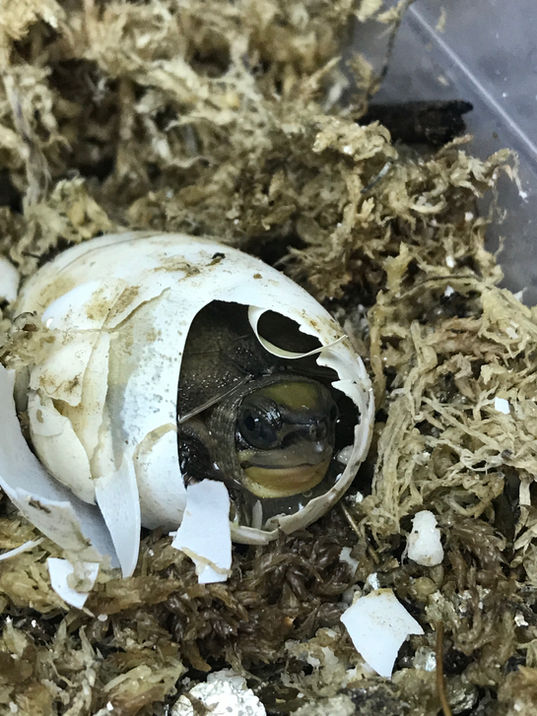top of page

Cuora trifasciata (Bell, 1825)
-
Cuora trifasciata luteocephala (Blanck, Protiva, Zhou, Li, Crow & Tiedemann 2017)
-
Cuora trifasciata trifasciata
Cuora trifasciata represents the second Cuora species described by science by Bell in 1825, and is probably the most widely recognized species of the genus Cuora. The golden coin turtle as it is called in much of China, valued as one of the most powerful animals in traditional Chinese medicine, and also reputedly one of the best tasting turtle species, it has quite the status.
C. trifasciata reaches 15–26 cm SCL; males have a thicker and longer tail than females. The carapace is chestnut brown with three longitudinal stripes, giving the species its scientific name (tri = 3, fascia = lines/stripes). The plastron is black, and the head is yellow with black lines and a brown blotch behind the eye.
In 2017, the species was split into two subspecies: the nominate subspecies (C. t. trifasciata) is endemic to the Chinese mainland provinces of Fujian, Guangdong, Hong Kong, and Guangxi, and Cuora trifasciata luteocephala on Hainan Island. C. t. luteocephala can be differentiated from the mainland nominate subspecies C. t. trifasciata by the pure pale yellow (luteo) head (cephala) pattern, the thick black bars on the carapace, the general orange-brown carapace color, and a different plastral pattern. Reaching up to 25 cm SCL and weighing over 2 kg, it reaches a generally larger size than the mainland form.
This turtle has a long history in Chinese folklore and traditional Chinese medicine. In recent years, C. trifasciata has become a financial investment and status symbol in China, and is the most sought-after turtle species in China. Its Chinese name translates as “Golden Coin Turtle” because of its value. It is being farmed by the thousands in China, but the demand for wild specimens is still high.
The last three decades of intense collecting and massive habitat destruction and degradation have brought it to the brink of extinction in the wild. Estimates are as low as 500 specimens remaining throughout the range. Fewer than twenty specimens per year are still reported by collectors. Hong Kong was long considered a potential stronghold, although in the past decade, illegal trapping has led to an almost complete population collapse in the region. On Hainan, the last holdouts are within heavily guarded military zones. Farmed C. trifasciata are of little conservation value due to potential intergradation/hybridization with related taxa. Fewer than 350 specimens of known taxonomic status are in assurance colonies in Hong Kong, Europe, and the United States. Future release projects in well protected areas are currently being considered, but are hindered by the continued high value and consequent demand for the species.

© Cuora.org
© Cuora.org
© Cuora.org
bottom of page



















